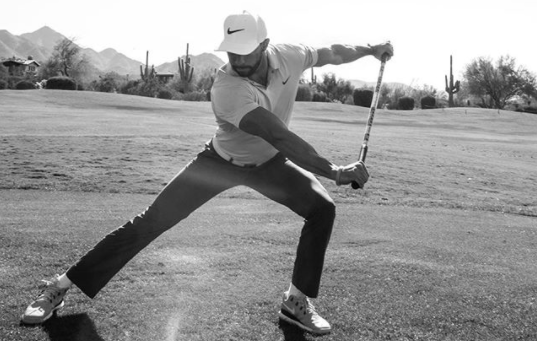IMPROVE MY GAME
Articles
6 Exercises Every Hypermobile Golfer Needs

Premier Fitness Systems is a fitness studio based in Scottsdale, Arizona specializing in helping golfers improve movement. They train a number of professional golfers, including Chez Reavie, Kevin Streelman and Scott Stallings, who each finished in the top 10 at last week's Pebble Beach Pro Am. The following is an article featuring insight/protocol established by their team of Greg McLean, Brandon Harris and Andrew Hannon.
One of the biggest issues we see with young golfers is their lack of intramuscular communication. Think about a cell phone that only has one bar of service. The message still comes across, but it might be spotty or you only get part of it. The same thing goes for these athletes. They would benefit from having an optimal signal with five bars, but are leaving plenty on the table as it relates to performance due to not being able to communicate with their bodies due to poor signaling. About five to fifteen percent of young golfers suffer from hypermobility which is a syndrome that affects connective tissue. There are varying levels, but in general these athletes have a really hard time sending good quality signals throughout their bodies.
Most of these golfers have low levels of activation which lends to inaccuracy and opens the door for injury as well. A result of most of these golfers having very lax joints, they end up not being able to use their muscles to control their swings. The swing is usually determined by the end range of the joints. So rather than accelerating and decelerating the club using the proper muscles, these young athletes tend to create a ton of force and not being able to slow it down the force just slams into the joint which has to absorb all the force being a horrible long term strategy.
As the term suggests, hyper-mobile athletes often have an easy time with exercises that challenge mobility, especially in a static environment. A hypermobile athlete might be able to touch their toes or make a large turn on the backswing, but they often struggle to control that mobility in dynamic exercises or movements. The following are a series of exercises that not only challenge mobility, but also stability and motor control. In order to build durable athletes who move well, it's important that athletes develop a robust range of movement capabilities. Don't mistake good mobility for good movement skills.
Golfers should be able to have good control of the club anywhere in space. This is where proper training strategies can be put in place to increase proprioception as well as stability in these young golfers. If a golfer can't talk to a certain part of their body and tell it to stay stable or move independent of another body part, then it makes it real hard to create power or move with efficiency. If you think about putting a crane in quicksand, it's the same concept. These young athletes are sitting on all this power, but because they can't activate muscles and create stability they can't create a base in which they can use to drive power. Without the ability to create stability accuracy also goes out the window.
The following are a series of exercises which we developed at PFS that are aimed at developing stability, motor control and intramuscular communication in the body. They would be appropriate as a pre-workout or pre-round routine.
5 Min Protcol:
Low to High Sphinx: 4 x 10 secs (move hands back 3 inches every set)
(Club) Glute Primer: 3 x 10 secs (do all 3 sets on one side before switching sides)
Kneeling Anti-Elevation: 2 x 15 secs
Kneeling Anti-Rotation: 2 x 15 secs (do one set pushing each direction)
Standing Anti-Elevation: 2 x 15 secs
Lunge with Rotation: 6 x10 secs (alternate sets on each side of the body)
Any golfer who doesn't make time to prepare their bodies to play is inviting injury and performance limitation, but hypermobile golfers are among the most vulnerable. Hypermobility isn't uncommon, especially among young golfers. When Rory McIlroy and Rickie Fowler first visited TPI they complained of lower back pain which resulted from limitations in strength and stability, especially in the lower body. Both have gone on to terrific careers, but not without addressing these issues first. If your child is hypermobile there's no reason they can't be the next Rory or Rickie... but not if they don't do something about it.